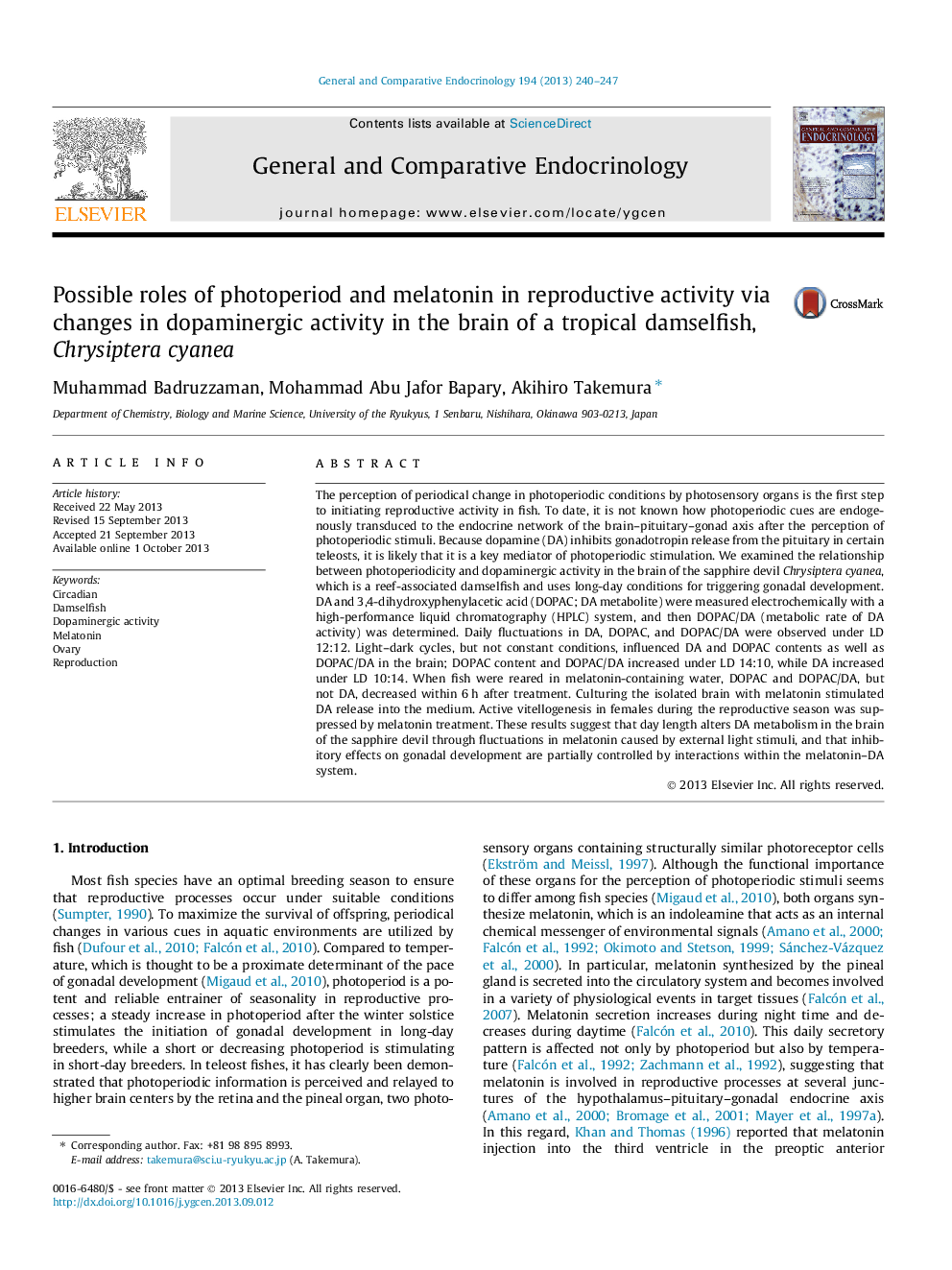| کد مقاله | کد نشریه | سال انتشار | مقاله انگلیسی | نسخه تمام متن |
|---|---|---|---|---|
| 2800317 | 1568911 | 2013 | 8 صفحه PDF | دانلود رایگان |

• We examined changes in dopaminergic activity in the brain of tropical damselfish.
• Dopaminergic activity varied according to photoperiods of long- and short-day.
• Rearing fish in melatonin-containing water resulted in decrease in its activity.
• Culturing the brain with melatonin stimulated dopamine release into the medium.
• Day length alters dopaminergic activity through fluctuations in melatonin.
The perception of periodical change in photoperiodic conditions by photosensory organs is the first step to initiating reproductive activity in fish. To date, it is not known how photoperiodic cues are endogenously transduced to the endocrine network of the brain–pituitary–gonad axis after the perception of photoperiodic stimuli. Because dopamine (DA) inhibits gonadotropin release from the pituitary in certain teleosts, it is likely that it is a key mediator of photoperiodic stimulation. We examined the relationship between photoperiodicity and dopaminergic activity in the brain of the sapphire devil Chrysiptera cyanea, which is a reef-associated damselfish and uses long-day conditions for triggering gonadal development. DA and 3,4-dihydroxyphenylacetic acid (DOPAC; DA metabolite) were measured electrochemically with a high-performance liquid chromatography (HPLC) system, and then DOPAC/DA (metabolic rate of DA activity) was determined. Daily fluctuations in DA, DOPAC, and DOPAC/DA were observed under LD 12:12. Light–dark cycles, but not constant conditions, influenced DA and DOPAC contents as well as DOPAC/DA in the brain; DOPAC content and DOPAC/DA increased under LD 14:10, while DA increased under LD 10:14. When fish were reared in melatonin-containing water, DOPAC and DOPAC/DA, but not DA, decreased within 6 h after treatment. Culturing the isolated brain with melatonin stimulated DA release into the medium. Active vitellogenesis in females during the reproductive season was suppressed by melatonin treatment. These results suggest that day length alters DA metabolism in the brain of the sapphire devil through fluctuations in melatonin caused by external light stimuli, and that inhibitory effects on gonadal development are partially controlled by interactions within the melatonin–DA system.
Journal: General and Comparative Endocrinology - Volume 194, 1 December 2013, Pages 240–247